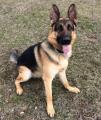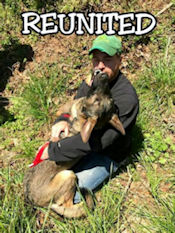 Free/Lost/Found/Stolen/Missing German Shepherds Dogs
Free/Lost/Found/Stolen/Missing German Shepherds Dogs
![]() German Shepherd Dog Owner, Trainer and Breeder Gifts
German Shepherd Dog Owner, Trainer and Breeder Gifts
![]() German Shepherd Gifts for Owners, Trainers and Breeders
German Shepherd Gifts for Owners, Trainers and Breeders
 German Shepherd Obedience Trainers
German Shepherd Obedience Trainers
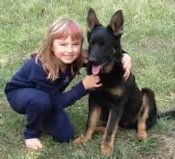 German Shepherd Protection Dogs
German Shepherd Protection Dogs
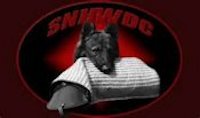 German Shepherd Schutzhund/IPO Clubs and Organizations
German Shepherd Schutzhund/IPO Clubs and Organizations
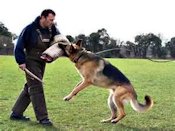 German Shepherd Schutzhund/IPO Protection Dog Trainers
German Shepherd Schutzhund/IPO Protection Dog Trainers
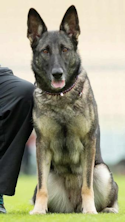 German Shepherd Working Line Dogs
German Shepherd Working Line Dogs
Searched for shepherd
CATEGORIES
|
Adult German Shepherds The AKC Standard says the German Shepherd "has a distinct personality marked by direct and fearless, but not hostile, expression, self-confidence, and a certain aloofness that does not lend itself to immediate and indiscriminate friendships. The dog must be approachable, quietly standing its ground and showing confidence and willingness to meet overtures without itself making them”. That's a great description of an ideal German Shepherd. When you're talking German Shepherd Dog maturity there are many factors involved.� Bone freeze occurs around 11 months.� There will be no more "growth" after that, but they will "fill out" until the age of 2 and some, beyond that.� In our experience, when they are 3, German Shepherd Dogs are� mature mentally and should be considered an Adult. |
Owner devastated, Please help locate our missing German Shepherd Dog. We have posted a description of our faithful family member. GSDsite.com Free Listing Policy The following Users are permitted to place free listings in their specific categories only. GSDsite will not post your listing if you select any additional categories during your listing process. Please Use the links in the upper left margin of GSDsite.com to place your listing. 1. Non Profit German Shepherd Dog Rescue Groups Anywhere In the World 2. Free/Lost/Found/Stolen/Missing German Shepherds Dogs Anywhere In the World 3. Do not add your listing to any other categories! Please note: You are permitted to charge a reasonable Re-homing Fee.
I would like to share the following with you but please keep in mind it is only my opinion. Regarding missing, lost or stolen German Shepherds: I do not recommend offering a reward for returning a loved one that belongs to you. Placing a flyer showing that Your German Shepherd was stolen should be sufficient. If someone contacts you and demands a reward then you should get as much contact information from the Individual as possible. It is illegal in the USA and probably in other Countries for demanding a reward to take place. Call the Police and give them the Contact Information that you have obtained and let them retrieve you’re your Loyal Companion. This is only my opinion - Please use your judgement. Ocassionaly an Owner has a need to depart with their German Shepherd Dog or Puppy. This is usually caused by a move or a new baby in the family. More often than not they will offer their German Shepherd Dog Free or their German Shepherd Puppy Free. |
||||||||
|
Alsation/German Shepherd Puppies At birth, a German Shepherd puppy of a standard litter of six to eight pups would be expected to weigh approximately 1% of the dam's pre-pregnancy weight. This varies depending on a number of factors, including but not limited to genetics, size of litter, gender, and environmental conditions for the dam and pups during pregnancy and whelp. The German Shepherd is currently listed as the third most popular dog breed registered with the AKC. This dog resembles that of its ancestor, the Wolf, and was originally bred to be the ideal herding Shepherd and guard dog. |
German Shepherds grow to be big, strong dogs who can be fairly stubborn and will display dominance if allowed to get away with it. They require a firm, consistent and always fair leader to guide them and set them up for success. German Shepherd training provides the ideal constructive outlet for all of your GSD's energy and focus. German Shepherd Dog training establishes the boundaries which will help your dog to be a reliable and well respected member of society. |
||||||||
|
Locate top quality German Shepherd Breeders at GSDsite.com How to find a responsible German Shepherd Breeder: Responsible German Shepherd Breeders don't sell their puppies to the first person who shows up with cash in hand. Too often, unsuspecting people buy puppies from puppy mills, or sometimes neighbors who breed their dog to make a little money or simply because they have a dog "with papers." Too often, the result is puppies in poor health or with temperament problems that may not be discovered right away. A German Shepherd Dog who has genetic health problems due to poor breeding practices or who develops significant behavior problems due to a lack of early socialization can cost thousands of dollars to treat—and result in grief and heartache as well. The last place on earth that I would look for a German Shepherd Puppy is in a pet store. Any breeder that is forced to sell his puppies to a pet store has no credibility. This only indicates he has no reputation as a breeder and nowhere else to sell his dogs. The majority of the dogs that end up in pet stores come from puppy mills. Puppy mills are a legitimate (despicable) business in many states and countries. You are definitely at the right site to begin with. Don’t feel that you have to buy a German Shepherd within a couple of miles from your home when you are able to get all the information that you need from GSDsite.com All we are is German Shepherds! Always do your Homework! Use the contact form below the Breeders Ad that interests you and ask questions. You should do a lot of homework before choosing a German Shepherd Puppy� Breeder. Make sure that they offer a dog health guarantee. |
German Shepherd Boarding The perfect Boarding Kennels should be clean and sanitized, facilities that includes spacious 10 feet by 15 feet heated and air conditioned interior each with ceiling fans which connect to a large 15 feet by 30 feet exterior runs so the dogs can come indoors or go outdoors as they please. Of course this would be the perfect kennel/boarding but at least you have an idea of what would be ideal.
|
||||||||
|
The majority of major police departments in large urban centers include a K9 unit which has specific tasks. These tasks are related to search and rescue, seizure, and other various duties assigned by their branch. The relationship between a police dog and his or her handler requires a closeness and ability to communicate and work together well as a team. A judicious obedience to hand-signals, voice commands, and pre-meditated training procedures is required from the dog. This is complemented by an equal amount of respect, patience, and diligence from the handler.K-9 German Shepherds are also considered Service Dogs. |
Schutzhund (German for "protection dog") is a dog sport that was developed in Germany in the early 1900s as a breed suitability test for the German Shepherd Dog. The test would determine if the dog displayed the appropriate traits and characteristics of a proper working German Shepherd Dog. Today, it is used as a sport where many breeds other than German Shepherd Dogs can compete, but it is a demanding test for any dog that few can pass. Traits of Schutzhund dogs Schutzhund tests dogs of all breeds for the traits necessary for police-type work. Dogs that pass Schutzhund tests should be suitable for a wide variety of tasks: police work, specific odor detection, search and rescue, and many others. The purpose of Schutzhund is to identify dogs that have or do not have the character traits required for these demanding jobs. Some of those traits are:
Schutzhund tests for these traits. It also tests for physical traits such as strength, endurance, agility, and scenting ability. The goal of Schutzhund is to illuminate the character and ability of a dog through training. Breeders can use this insight to determine how and whether to use the dog in producing the next generation of working dogs. History In response to political forces in Germany, in 2004 the Verein für Deutsche Schäferhunde (SV) and the Deutscher Hundesportverein (DHV) made substantial changes to Schutzhund. The DHV adopted the Fédération Cynologique Internationale (FCI) rules that govern IPO titles, so that at least on paper the SV and DHV gave up control of the sport to the FCI. The DHV changed the name of the titles from "SchH" (Schutzhund) to "VPG" (Vielseitigkeitsprüfung für Gebrauchshunde which roughly translates Versatility examination for working dogs). The SV has retained the "SchH" title names, but otherwise conforms to the DHV/FCI rules. Description There are three schutzhund titles: Schutzhund 1 (SchH1), Schutzhund 2 (SchH2), and Schutzhund 3 (SchH3). SchH1 is the first title and SchH3 is the most advanced. Additionally, before a dog can compete for an SchH1, he must pass a temperament test called a B or BH (Begleithundprüfung, which translates as "traffic-sure companion dog test"). The B tests basic obedience and sureness around strange people, strange dogs, traffic, and loud noises. A dog that exhibits excessive fear, distractibility, or aggression cannot pass the B and so cannot go on to schutzhund. The Schutzhund test has changed over the years. Modern Schutzhund consists of three phases: tracking, obedience, and protection. A dog must pass all three phases in one trial to be awarded a schutzhund title. Each phase is judged on a 100-point scale. The minimum passing score is 70 for the tracking and obedience phases and 80 for the protection phase. At any time the judge may dismiss a dog for showing poor temperament, including fear or aggression.
� Training Schutzhund training, like the sport itself, has evolved over the years. The definitive description of Schutzhund training in the first 50 years of the sport is Col. Konrad Most's Dog Training: A Manual, 1910 By modern standards, Most's training is very harsh and possibly abusive. Despite this, it is also structured, consistent, and in many ways conforms to more recent ideas on learning theory. Over time, the more brutal techniques fell out of use and few trainers still follow Most's program. In 1981, Helmut Raiser published Der Schutzhund (English trans. by Armin Winkler, 1999 (no ISBN)), which radically changed Schutzhund protection training. In the US, the next great change in Schutzhund training is marked by the 1991 publication of Schutzhund Theory & Training Methods by Susan Barwig and Stewart Hilliard. Also see TOP WORKING DOGS, A Schutzhund Training Manual by Dr. Dietmar Schellenberg, first published in 1982. With the fifth edition in A reliable source for training information is a good Schutzhund club. The overwhelming majority of Schutzhund training is done by owner/handlers at local clubs. There are very few clubs in the US, making books and videos a vital source of information in that country. In the US, most clubs are affiliated with the American Working Dog Federation (AWDF), United States Boxer Association (USBA), American Working Malinois Association (AWMA), United Schutzhund Clubs of America (USA), Deutscher Verband der Gebrauchshundsportvereine (DVG), or German Shepherd Dog Club of America-Working Dog Association (GSDCA-WDA). Schutzhund clubs tend to be small, 20 or less members, because there is a limit to the number of dogs that can be trained in one session. Clubs often provide only limited formal assistance with tracking and obedience. To a certain extent, the clubs exist to provide the specialized resources needed to train the protection phase. However, a legitimate club will not permit a member to train only protection. Usually the more experienced members are willing to help the novice with tracking and obedience, though this is typically somewhat informal in the US. Another function of Schutzhund clubs is to identify dogs that should not be trained in Schutzhund. Schutzhund is a challenging test of a dog's character, and not every dog, or even every GSD, is up to the challenge. The training director of the club has a responsibility to the dog, handler, club, and society to constantly evaluate every dog and to decline to train any dog with questionable character or working ability. Training a dog that does not really want to work is stressful and frustrating for all parties involved. Schutzhund clubs regularly hold public trials, providing the opportunity for dogs to earn titles and for handlers to assess their training progress. A tiny number of dedicated handlers have trained their dogs to title readiness strictly from books and videos. This is unlikely to succeed in most cases, because it is almost impossible to train the protection phase without a helper. A good club should be considered a necessity for Schutzhund training. Organizations Schutzhund is governed by a number of organizations. The FCI, the international umbrella organization for all things dog related, sets the rules for IPO titles. (IPO is the FCI name for sport Schutzhund titles.) The AZG sets the rules for Schutzhund for all breeds. The AZG is one of the component organizations of the VDH, the all breed kennel club of Germany. The German Shepherd Dog Club of Germany, the SV, is a member of the VDH and arguably the most powerful influence on the sport. Although the AZG formally sets the rules, the AZG does nothing with respect to Schutzhund without the approval of the SV. Still, the SV has great influence in the FCI and is probably still the most powerful influence on the sport. The DVG is an all-breed dog sport organization in Germany that organizes clubs and trials and has branches in Canada and The United States. The largest Schutzhund organization in the US is the United Schutzhund Clubs of America, called USCA. In spite of its name, USCA is a German Shepherd Dog breed club. The Working Dog Association is a branch of another GSD breed club, the German Shepherd Dog Club of America, which also sponsors clubs and trials. There are a small number of DVG clubs in the United States, various other breed organizations that are involved in Schutzhund, and the American Working Dog Federation (AWDF), which is an umbrella organization. There are other breed specific Schutzhund clubs such as the United Doberman Club. In the case of the Doberman the AKC will not allow you to add Schutzhund titles to your dog's pedigree unless they are earned with the United Doberman Club. This barely scratches the surface. |
||||||||
|
The purpose of Schutzhund is to demonstrate the dog's intelligence and utility. It also measures the dog's mental stability, endurance, structural efficiencies, ability to scent, willingness to work, courage, and trainability. This working dog sport offers an opportunity for dog owners to train their dog and compete with each other for recognition of both the handler's ability to train and the dog's ability to perform as required. It is a sport enjoyed by persons of varied professions, who join together in a camaraderie born of their common interest in working with their dogs. Persons of all ages and conditions of life including those with significant disabilities enjoy Schutzhund as a sport. Often, it is a family sport. |
Bi-color German Shepherds are often defined as being predominantly black Bi-color German Shepherds, Sable German Shepherds, Panda German Shepherds, Blue German Shepherds, Liver German Shepherds, Blue/ and Liver German Shepherds, Black German Shepherds, Tri-Color Panda German Shepherd, Solid Liver German Shepherds, Liver and Tan German Shepherds with markings on the bottoms of their legs, and sometimes above their eyes and around their muzzles. |
||||||||
|
German Shepherd Dog Rescue You can list German Shepherd Rescue Dog Groups on GSDsite at no charge and you can place a free Pay Pal Button for Donations (Non Profit Rescue Groups only). Adopt A German Shepherd and you will never be disappointed. German Shepherds are extremely social and loyal. German Shepherd Rescue groups are located all over the world. Please keep in mind that German Shepherd Rescue Groups consist of Volunteers. They work extremely hard and really need donations to help them with their difficult tasks. If you see a Pay Pal Button and you are able to afford a donation to your local German Shepherd Dog Group then Please donate. They really do need your help. Thank you in advance, Steven Ingate Owner of GSDsite.com |
Deutscher Schäferhunde Many people say at 2 years is considered to be Adult GSD and fully mature at 3+ years old. Some people say the fear period as puppy GSD ends at 18 Months of age, meaning he is qualify to be as self-confident GSD like an adult dog. When you're talking maturity there are many factors involved. Bone freeze occurs around 11 months. There will be no more "growth" after that, but they will "fill out" until the age of 2 and some, beyond that. It has been my experience, when they are 3, they are mature mentally. Dogs will consider puppies as just that until about the age of 6 months, then all bets are off. This is when you may start to see aggression from an older dog toward the youngster. Sometimes, it will be just to put them in their place, but it can lead to injury and even death. Physically, 2...mentally 3...to another dog, 6 months |
||||||||
|
Trained German Shepherd dogs have a significantly higher value than puppies. They are a wonderful asset to people who are not able to put in the time necessary to train a dog or raise a puppy. Hundreds of training hours are needed before a dog can pass the stringent requirements of a training degree. They require obedience training and training should be ongoing and consistent. Trained German Shepherds can be used for protection, service dogs, schutzhund, IPO, and K9 German Shepherds. |
German Shepherd Dog Studs This is a new Category! "GSDsite.com Will Never Stop Improving" Choosing a German Shepherd Stud for your female is a very important decision. As breeders we take the place of nature and select what we feel is the best male to compliment our females. There is so much to consider as� you review the stud listings here on GSDsite. Keep in mind the ancestry of your dog, physical and mental traits you want to retain and improve upon, health clearances such as hip and elbow certification and screening for DM. Success in the conformation ring or on the trial field is another component to evaluate. Things to consider when selecting your German Shepherd Stud: Titles and awards: Generally people don't bother putting time and� effort into a male that will not be desirable as a stud in the end.� As a result most European males are not considered stud candidates unless they have� attained a high degree of training such as Schutzhund 3 or IPO3. American studs typically have some form of American Champion associated with their list of accomplishments. Show ratings: Show ratings can be� difficult to assess. May breeders offering stud services seem to have it confused themselves. Show ratings are broken into two catagories; the level of the event the rating was given, World,� National, Regional, and Club as well as the placement itself, V1, V2, V3, or SG1, SG2, SG3, etc. If a dog is advertised with a show rating it should be identified as to where and what the rating was. Protocol is the show rating given with the dogs name is earned at the World level or National level the consumer should check the results to see where the rating was earned. Ratings earned at Regional and Club level are often presented and mis-interpreted as World or National level results. Health clearances: Typical clearances are the Hip and elbow certifications offered by OFA or the German 'a' stamp program. There are other certifications obtainable from other organizations. Check to see how they compare to the American and European standard. Another health consideration now emerging on the scene is the DNA test for DM. Most stud owners can advise you if their dog has been tested as a carrier and what the result is. In the American breed there are tests for other ailments prone to the breed. Ask your stud dog owner what test were done if your selection is an American male. Production: By the time the dog is offered as a stud male, there should be some history of the dogs' ability to produce. Many top dogs are top producers, many are not. Check the results of the males offspring and talk to the owner to find out specifically what their male has produced. |
||||||||
|
You should expect the following fees when purchasing a GSD import. Typically flying a puppy is $450.00 or more. You should expect a German Shepherd puppy to cost approximately $4,500.00 as a minimum which will not include the crate. You should also expect German shepherd import puppies direct from Germany with pink papers registered with the Verein für Deutsche Schäferhunde (SV in Germany) and all the necessary paperwork for registration with the American Kennel Club (AKC). Prices will vary based on age, blood line and training. �
|
|
||||||||
|
Service Animals The Department of Justice published revised final regulations implementing the Americans with Disabilities Act (ADA) for title II (State and local government services) and title III (public accommodations and commercial facilities) on September 15, 2010, in the Federal Register. These requirements, or rules, clarify and refine issues that have arisen over the past 20 years and contain new, and updated, requirements, including the 2010 Standards for Accessible Design (2010 Standards). How “Service Animal” Is Defined Service animals are defined as dogs that are individually trained to do work or perform tasks for people with disabilities. Examples of such work or tasks include guiding people who are blind, alerting people who are deaf, pulling a wheelchair, alerting and protecting a person who is having a seizure, reminding a person with mental illness to take prescribed medications, calming a person with Post Traumatic Stress Disorder (PTSD) during an anxiety attack, or performing other duties. Service animals are working animals, not pets. The work or task a dog has been trained to provide must be directly related to the person’s disability. Dogs whose sole function is to provide comfort or emotional support do not qualify as service animals under the ADA. This definition does not affect or limit the broader definition of “assistance animal” under the Fair Housing Act or the broader definition of “service animal” under the Air Carrier Access Act. Some State and local laws also define service animal more broadly than the ADA does. Information about such laws can be obtained from the State attorney general’s office. If someone's dog calms them when having an anxiety attack, does this qualify it as a service animal? It depends. The ADA makes a distinction between psychiatric service animals and emotional support animals. If the dog has been trained to sense that an anxiety attack is about to happen and take a specific action to help avoid the attack or lessen its impact, that would qualify as a service animal. However, if the dog's mere presence provides comfort, that would not be considered a service animal under the ADA. Where Service Animals Are Allowed Under the ADA, State and local governments, businesses, and nonprofit organizations that serve the public generally must allow service animals to accompany people with disabilities in all areas of the facility where the public is normally allowed to go. For example, in a hospital it would be inappropriate to exclude a service animal from areas such as patient rooms, clinics, cafeterias, or examination rooms. However, it may be appropriate to exclude a service animal from operating rooms or burn units where the animal’s presence may compromise a sterile environment. Service Animals Must Be Under Control Under the ADA, service animals must be harnessed, leashed, or tethered, unless these devices interfere with the service animal’s work or the individual’s disability prevents using these devices. In that case, the individual must maintain control of the animal through voice, signal, or other effective controls. Do they have to be quiet and not bark? Under control also means that a service animal should not be allowed to bark repeatedly in a lecture hall, theater, library, or other quiet place. However, if a dog barks just once, or barks because someone has provoked it, this would not mean that the dog is out of control. Do service animals have to wear a vest or patch or special harness identifying them as service animals? No. The ADA does not require service animals to wear a vest, ID tag, or specific harness. |
Working Line German ShepherdBreed CharacteristicsAKC GroupHerdingOriginGermanyTypeWorking / CompanionBreed SizeMedium-LargeHeight24-26 inches (Males)22-24 inches (Females)Weight66-88 pounds (Males)49-71 pounds (Females)TemperamentBrave, Protective, Guard-dog, Athletic, Strong, Confident,Intelligent, Alert, Independent, Loyal, High-energy,Aloof with Strangers, Affectionate, Versatile, TerritorialAppearanceMuscular, Pointy Ears, Athletic, Straighter ToplineLifespan10-13 yearsHealth IssuesBloat (GDV), Pancreatitis, Hip Dysplasia (rare)Coat ColorsBlack Sable, Black & Tan, Solid BlackCoat TypeDouble-coated, Short-Medium, MediumSheddingHeavyGroomingModerateEasy to TrainYesExercise NeedsMedium-HighHypoallergenicNoChild FriendlyYesPet FriendlyYesGood for new ownersYes |
||||||||
|
Long Coat German Shepherd The long-hair gene is recessive, making the long-hair variety rarer. Treatment of the long-hair variation differs across standards; they are accepted but not competed with standard coated dogs under the German and UK Kennel Clubs while they can compete with standard coated dogs but are considered a fault in the American Kennel Club.The FCI accepted the long-haired type in 2010, listing it as the variety b - while short-haired type is listed as the variety a.
|
German Shepherd Jewelry Gsdsite is has German Shepherd Jewelry For German Shepherd Lovers. These Jewelry items will make perfect gifts for a friend, Family Member or even Yourself. |
||||||||
|
In German Shepherd Dogs the recessive gene for white coat hair was cast in the breed gene pool by the late 19th and early 20th century breeding program that developed and expanded the German Shepherd Dog breed in Germany. A white herding dog named Greif was the grandfather of Horand von Grafrath, the dog acknowledged as the foundation of all contemporary German Shepherd Dog bloodlines. Rittmeister Max von Stephanitz December 1864 to April 1936 Information provided in early books on the German Shepherd Dog make mention of Greif and other white German herding dogs, with upright ears and a general body description that resembles modern German Shepherd Dogs, shown in Europe as early as 1882. The early 20th century German Shepherd breeding program extensively line bred and inbred "color coat" dogs that carried Greif's recessive gene for "white coats" to refine and expand the population of early German Shepherd Dogs. White coats were made a disqualification in the German Shepherd Dog Club of Germany breed standard in 1933 after the breed club came under the control of the German Nazi party that took over all aspects of German society in February 1933 when Hitler declared a state of emergency. The German breed standard remained unchanged as German breeders repopulated the breed in the years after the conclusion of WWII. In 1959 the German Shepherd Dog Club of America (GSDCA) adopted the exclusively colored breed standard of the parent German breed club. White-coated German Shepherd Dogs were officially barred from competition in the American Kennel Club conformation ring in the United States starting in 1968. AKC-registered white German Shepherd Dogs may still compete in performance events. During the 1970s, white dog fanciers in the United States and Canada formed their own "White German Shepherd" breed clubs, breeding and showing their dogs at small specialty dog shows throughout North America. The White Shepherd Club of Canada (WSCC) has been dedicated to the promotion and preservation of the White Shepherd since 1971. |
Gsdsite.com has a fabulous selection of more than 10,000 gift choices for German Shepherd Owners, German Shepherd Trainers and German Shepherds Breeders. German Shephe4rd Cups, German Shepherd Jewelry German Shepherd T-Shirts just to name a few. |
||||||||
|
The black German shepherd is one of the many different coat colors and patterns that are associated with the German shepherd breed. The black German shepherd is not a separate dog breed from the German shepherd breed like the white German shepherd which is recognized as a separate dog breed by some kennel clubs. The black coat of the German shepherd is the result of genes passed down to the pup by the parents. > There are some distinct variations between the Black German Shepherd and the standard German Shepherd. The Black German Shepherd has retained its more traditional look of the breed. The Black German Shepherd has a much straighter back. It also does not "cringe", an appearance common to regular German Shepherds. The coat has many variations and can be long or short with a flowing mane, feathering and skirting. Black German Shepherds have very pleasant temperaments and are very loyal, watchful and self-assured dogs. They very rarely ever back down. These dogs are very trainable and their training should begin when they are very young. The only health problem you must be aware of in a Black German Shepherd is hip and elbow dysplasia. Preventative measures should be taken early on. The Black German Shepherd makes a great family pet, but might be a bit strong for small children. |
|
||||||||
|
Schutzhund tests dogs of all breeds for the traits necessary for police-type work. Dogs that pass Schutzhund tests should be suitable for a wide variety of tasks: police work, specific odor detection, search and rescue, and many others. The purpose of Schutzhund is to identify dogs that have or do not have the character traits required for these demanding jobs. Some of those traits are: Strong desire to work - Courage - Intelligence – Trainability - Strong bond to the handler -Perseverance - Protective Instinct. Schutzhund training tests these traits. It also tests physical traits such as strength, endurance, agility, and scenting ability. The goal of Schutzhund is to illuminate the character of a dog through training. Breeders can use this insight to determine how and whether to use the dog in producing the next generation of working dogs. |



 Categories
Categories  Areas
Areas  Place a FREE ad
Place a FREE ad
 Colors
Colors 










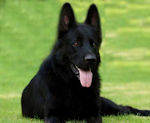
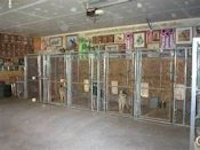
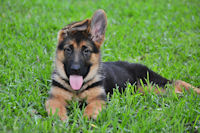
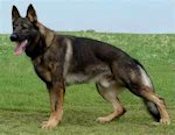
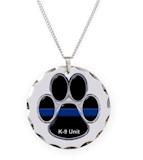
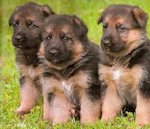

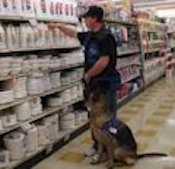

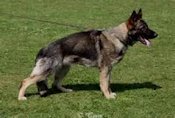




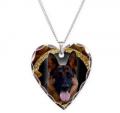
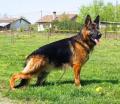
 Pennsylvania
Pennsylvania
 Alabama
Alabama





 Alaska
Alaska
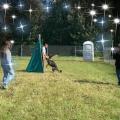

 Alberta
Alberta

